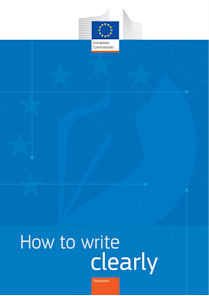
Good-Practice
The new platform for project- and quality management in the health, social and education sector


About one in five adults have difficulty understanding the written word. If we are to reach socially disadvantaged people, it is important for us to write in an easily understandable style.
There are guidelines on: reaching allophone groups, inclusive health communication, plain language, translation management, practical examples, and quality of health information for target groups.
The guides are currently available in German and French.
When they are involved, members of the target group are not seen as passive recipients but as an active part of the project. Their experiences are poured directly into the development and implementation. This enables members of the target group to help shape structures, processes and measures that affect them. They help to ensure that the measures are oriented towards their actual needs and life circumstances.
Ideally, members of the target groups are involved in all project phases. It is also worth involving them in ongoing projects, for example as part of a project evaluation so that adjustments can projects make more successful.
Would you like to identify disadvantaged population groups and take their needs into account? We can advise you:
What makes for good-quality health information? Evidence-based content and appealing design are certainly important aspects of quality. However, when aiming to give equal access to health information, professionals should ask themselves whether it can also reach disadvantaged population groups. After all, it is precisely these groups that are dependent on health information that is targeted specifically at them.
Here, you can find suggestions, guidelines and tools to improve the quality of health information taking account of equal opportunities. migesplus awards the particularly suitable information materials its ‘Label migesplus’.
Would you like to develop health information for vulnerable target groups? Careful planning helps you to choose suitable media types and reach your target group.
The different life circumstances of the target groups should be taken into account when choosing information channels and formulating your health messages. This is crucial, so that they feel these messages are for them. Here you will find a collection of recommendations, tools, guidelines and studies.

The new platform for project- and quality management in the health, social and education sector
Plain language is writing designed to facilitate access to written information for people who have difficulty reading and understanding the written word, for example people with little or no formal education or little knowledge of a national language. Plain language makes use of easier words, shorter sentences, meaningful images and a clear layout, while avoiding abbreviations and technical terms.

Three good reasons to write clearly are: - to work more effectively together; - to reduce unnecessary correspondence; - to build goodwill.
Intercultural interpreters speak both the local language and the migrant’s language. But as a rule they also have personal experience as a migrant. They know the Swiss healthcare, social service and education systems and the related structures in the migrant’s country of origin. This knowledge helps them to avoid any misunderstandings. Intercultural interpreters are bound by professional secrecy.
Would you like to find out more about translating and interpreting apps? migesplus presents some tried and tested digital translation and interpreting tools. Note that none of these tools meet the quality standards provided by professional interpreters and translators.